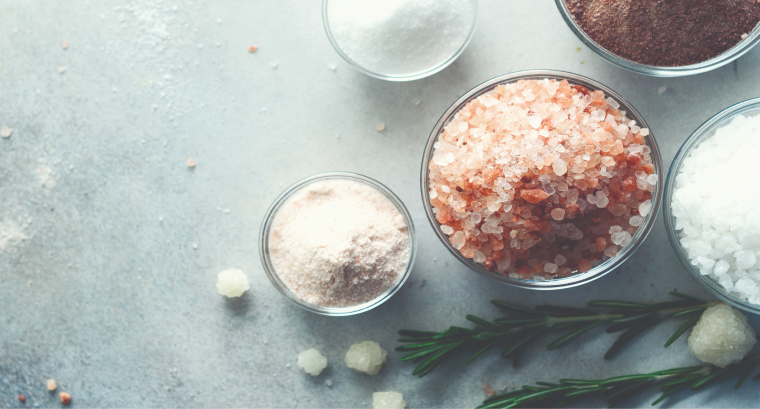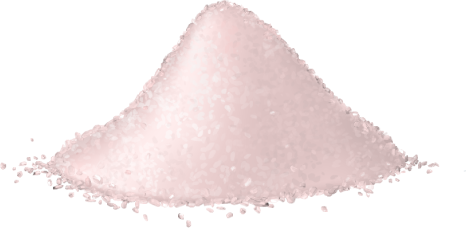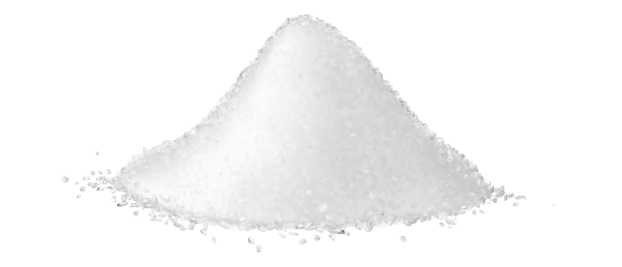



Debunking the salt and
sodium myths!
Sodium and salt are often being used interchangeably, but they are not the same. Sodium is an essential
mineral that your body needs as it maintains fluid balance, regulates blood pressure and keeps muscle and
nerves functioning normally. On the other hand, salt, also known as sodium chloride, is a crystal-like
chemical compound that is made up of 40 percent sodium and 60 percent chloride. It is often added to food as
a flavour enhancer and used for food preservative.
Findings from National Nutrition Survey
2018/2019 revealed that 90% of Singaporeans consumed an average of 3,600mg of sodium a day (9g of salt).
This is almost double of the World Health Organization’s (WHO) recommended daily limit of less than 2,000mg
of
sodium a day.
Excessive sodium intake leads to increased risk
of hypertension,
which is one of the major risk factors
for chronic diseases such as heart disease, stroke and kidney
failure. Singapore launched the new nationwide sodium reduction campaign last year, which aims to reduce
Singaporean’s daily sodium consumption by 15 percent over the next five years. To aid in achieving this, let
us debunk some common myths of sodium and
salt together!
Myth 1:
Sodium can only be found
in salt and sauces
Sodium is often added during food preparation to enhance
flavour, improve texture and extend its shelf
life. Most people often think that sodium only comes from salt and seasoning, but in fact a large amount of
sodium can also be hidden in processed food such as instant noodles, processed meats or food like fish ball
and fish cake, savoury snacks, canned food, preserved food and convenience meals.
One can learn
how to purchase a lower sodium food item by reading the nutrition labels on the food packaging. Look out for
the amount of sodium listed under ‘per 100g/ml’ column on the nutrition information panel
(NIP) when
comparing sodium content of two similar food items. However, be mindful of the serving size as you will
consume more sodium if you eat more than the listed serving size. Alternatively, look out for products that
are labelled with the Healthier Choice Symbol (HCS) logo for lower sodium options.

Contains at least 25% less sodium compared to similar products in the same category

Contains no additional sodium added to the product
Myth 2:
Himalayan/pink salt/sea salt
is nutritionally better
than regular table salt
You might have seen varieties of salt advertised as having extra health benefits like they are nutritionally
better as it contains extra minerals that are good for your body. In fact, all types of salt such as Himalayan
salt, pink salt, sea salt and more, contain around 40 percent of sodium,
just like the regular table
salt. They may differ in some trace minerals, but they are only present in small amounts.
Nevertheless, it is best to still consume
salt in moderation.


Myth 3:
Monosodium glutamate(MSG)
is worse than salt
You’ve probably heard of MSG being bad for you. Is this true? MSG is produced by fermentation of corn, sugar beets, sugar cane or molasses. It is also naturally occurring in some food such as tomato, cheese and meats. Like salt, MSG is often used as a flavour enhancer which makes food taste better as it delivers an ‘umami’ or savoury meaty flavour. Although MSG is often mistakenly thought of as being high in sodium, it actually contains just one-third the sodium of table salt. If you are keen to use MSG to enhance your dish, do keep in mind to still use it as the only source of flavour enhancer for the dish and in moderation as it does contain sodium as well!
MSG

of sodium
Salt

of sodium
Myth 4:
Food without added salt or
contains less salt is usually
bland and tasteless
Food can still taste great and delicious without added
salt or using less salt. This can be done by
simply using natural ingredients to enhance the taste and flavour of dishes during meal preparation. For
example:
Our taste buds will adjust and regain its sensitivity to salt and other flavours after cutting down on salt intake gradually. You will be surprised that you will crave for less salty food and enjoy more flavours in the natural foods after two to three weeks.
